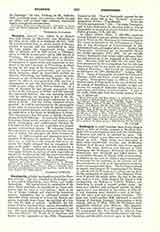

Stauropolis, a titular metropolitan see of the Province of Caria. The city, founded by the Leleges, was at first called Megalopolis, then Ninoe, and finally Aphrodisias. The legend which in explanation of the name Ninoe attributes its foundation to Ninus only proves that the town is very ancient. Built at the foot of Mount Cadmus and watered by numerous sources, Aphrodisias had a celebrated temple of Aphrodite which secured for it from the Roman emperors, especially from Caesar, the privilege of a free city and the right of asylum. Apollonius, the historian of Caria, was born there, as was Alexander, the commentator of Aristotle in the second century of our era. The name Aphrodisias is still used by the “Hierocles Synecdemus”, by Novel clx of Justinian, and figures in the signatures of the Fifth Oecumenical Council in 553. That of Stauropolis appears for the first time about 640 in the “Ecthesis” of pseudo-Epiphanius (Gelzer, “Ungedruckte … Texte der Notitiae; episcopatuum”, 534). The name Tauropolis, said to have been borne by the town prior to that of Stauropolis, is an error of several scholars (Revue des études grecques, XIX, 228-30).
Le Quien (Oriens christ., I, 899-904) mentions twenty bishops of this see, among whom were Ammonius at Nicaea in 325, Eumenius at Constantinople in 381, Cyrus at Ephesus in 431, Critonianus at Chalcedon in 451, Severianus at Constantinople in 553, Ephraem of Caria, a liturgical poet, etc. Another was Theopropios, mentioned by an inscription (Revue des études grecques, XIX, 298). In the seventh century Stauropolis had twenty-eight suffragan bishops and twenty-six at the beginning of the tenth century. Between 1356 and 1361 the see must have been abandoned by the metropolitan, but the title was long retained and he was given the revenues of other churches (Waechter, “Der Verfall des Griechentums in Kleinasien im XIV. Jahrhundert”, Leipzig, 1903, 34-7). Isaias of Stauropolis attended the Council of Florence (1439) and fled to avoid signing the decree of union. Excavations begun in 1904 at Ghere, the modern name of Stauropolis in the caza of Echme and the sanjak of Saroukhan, have brought to light the thermoe, the temple of Aphrodite dating from the second century after Christ, and the stadium. A part of the walls, which date from the fourth century of our era, is preserved.
S. VAILHÉ

